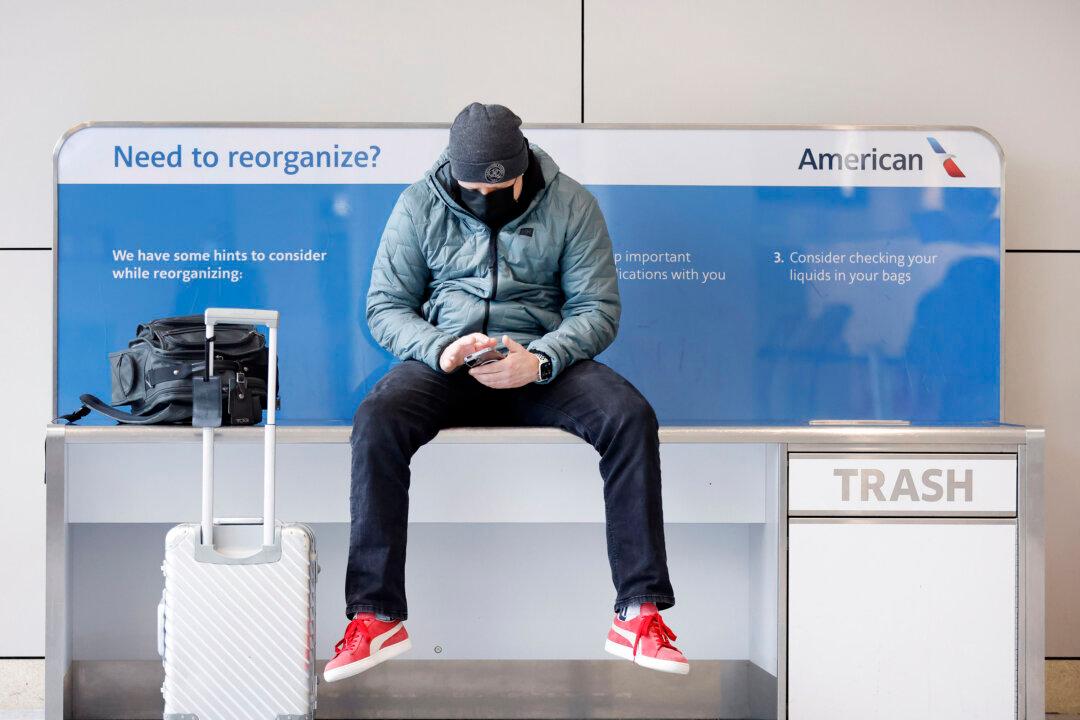Experts say combined factors are contributing to this bleak forecast for the nation’s traveling public, who have been plagued by flight delays and cancellations that have left many stranded at airports instead of enjoying vacations or family gatherings.
U.S. Secretary of Transportation Pete Buttigieg said his office is currently investigating several airlines for what a spokesperson called “unrealistic scheduling,” referring to practices that misrepresent the carrier’s ability to actually service the tickets it’s selling to customers.
“We have active investigations underway right now with regard to that,” Buttigieg said. “We take that very seriously because when you sell a ticket to a paying customer and you make a profit off of that, you better be ready to do everything in your power to service that ticket. And we’re also going to hold you responsible for what happens if you can’t.”
Add to that an ever-increasing staffing shortfall when it comes to aviation sector workers, pretty much across the board, and it presages a prolonged period of trouble for U.S. travelers. The American public’s demand for flights is rising to record levels not seen since just prior to the pandemic, while the number of these critical workers is actually falling.
“If you look at the delays, for example, that America experienced through last year in the summer of 2022, a lot of that was driven by these companies not having the staff that they needed,” the Transportation Secretary told CBS News. ”This is not something that’s going to be worked out overnight. It took years to get this way.”
According to CBS’ analysis of data from the FAA, U.S. Department of Transportation and U.S. Department of Labor, the aviation industry is currently short about 17,000 pilots, 12,800 certified mechanics and about 3,000 air traffic controllers, with the gap continuing to widen every year. Moreover, experts are predicting that the problem could get quite a bit worse before it gets any better.
The outlet’s analysis of FlightAware data showed that the number of overall flight delays that were attributable to issues within airlines’ control has increased from 5.2% in 2018 to 7.6% in 2023. And, during the busiest periods, that percentage is much worse.
For example, during the four-day period between June 24 and 27, 2023, one-third of all U.S. flights were delayed, representing a 25% increase over the same stretch last year. During those same days, one in every 17 of the nation’s flights ended up canceled, representing a 374% increase in cancellations compared with the same period in pre-pandemic 2019.
Then, there was the now-infamous Southwest Airlines holiday meltdown of 2022. During a nightmare period between Dec. 24 and 31, a combination of weather, software and staffing challenges caused Southwest to cancel over 14,000 flights, representing 72.3% of all those canceled across the nation at the time.
Secretary Buttigieg’s office confirmed to CBS News that Southwest Airlines is among the airlines currently under investigation, but declined to identify any other carriers included in the scope of the process or provide the outlet with a timeline.
While airlines like to blame harsh weather conditions for delays and cancellations on any given occasion (which, of course, is accurate in some cases), industrywide staffing shortages are the real culprit when it comes to today’s consistent trends in air travel disruptions.
And, while both government entities and the airlines themselves are bolstering and widening the scope of their recruitment efforts, there’s no earthly way that they can replace the thousands of employees who were laid off, took early retirement or exited the industry altogether when the pandemic forced carriers to cut their workforces quickly enough to keep up with demand.
Airlines 4 America (A4A), the trade association that represents the interests of seven of the nation’s largest passenger carriers, told CBS News that the airlines have, “reduced their schedules to reflect current operating realities” and are “hiring aggressively to make sure they have the right people in the right place at the right time.”
“US airlines recognize the importance of securing a pipeline of new employees—pilots, flight attendants, mechanics and others—and have established new pilot training programs, enhanced recruitment efforts and implemented programs to address financial hurdles,” the spokesperson added.
Here are some of the staffing hurdles the aviation sector currently faces:
— Air traffic controllers: The industry is 3,000 air traffic controllers short of meeting current demand. These professionals, who perform the job that is perhaps the most crucial to ensuring passengers’ safety, must attend a specialized academy for between two and five months, and then complete two to five years of on-the-job training in order to become fully certified, a process that can cost them $35,000 or more. And, air traffic controllers are forced to retire at age 56, by law.
— Pilots: Training a single pilot can take two years or more at a cost of over $100,000. Commercial pilots are also legally required to retire at age 65. Aviation consultant Oliver Wyman expects that this mandated age of retirement will cause the sector to be 24,000 pilots short by the year 2026, after which the gap between trained pilots and demand for commercial flight can slowly begin to close.
Dean Headley, a Wichita State University emeritus associate professor, told CBS News, “The airlines are doing about as much as they can [to improve staffing levels]. They can train about 1,500 to 1,800 pilots a year,” he said. But, with the industry presently short by around 17,000 pilots, they simply “can’t catch up that quick.
— Aircraft mechanics: It takes between 18 months and two years for mechanics and maintenance technicians to get properly trained and certified. In light of that time lag, Wyman predicts the sector will see a shortage of around 18,000 mechanics in the coming years. At present, the U.S. is short by about 12,800 aircraft mechanics, and Boeing has reportedly estimated that the country will need 178,000 of these key personnel in coming years, and more than 600,000 worldwide.
Joel English, vice president at the Aviation Institute of Maintenance (AIM), which is currently training about 4,200 future aviation maintenance technicians, told CBS News, “The shortage is real, it’s impacting everyone who engages in air travel, and it’s an issue we have to address or ticket prices are going to continue to go up and the delays will continue to plague us.”
_____
©2023 Northstar Travel Media, LLC. Visit at travelpulse.com. Distributed by Tribune Content Agency, LLC.






